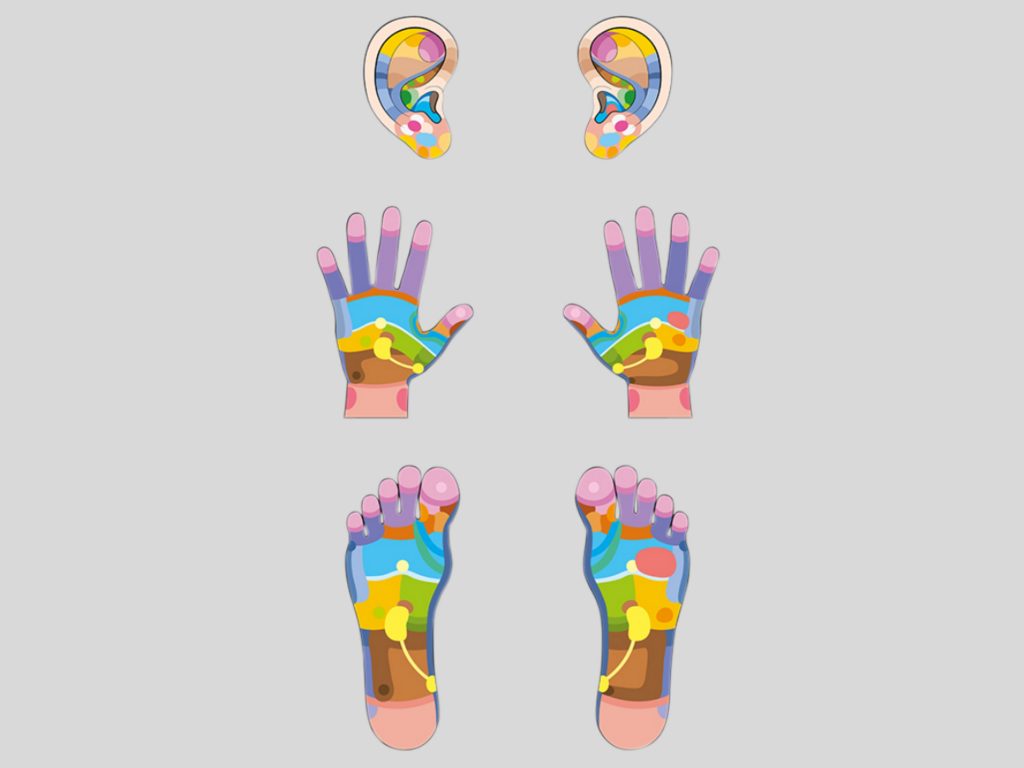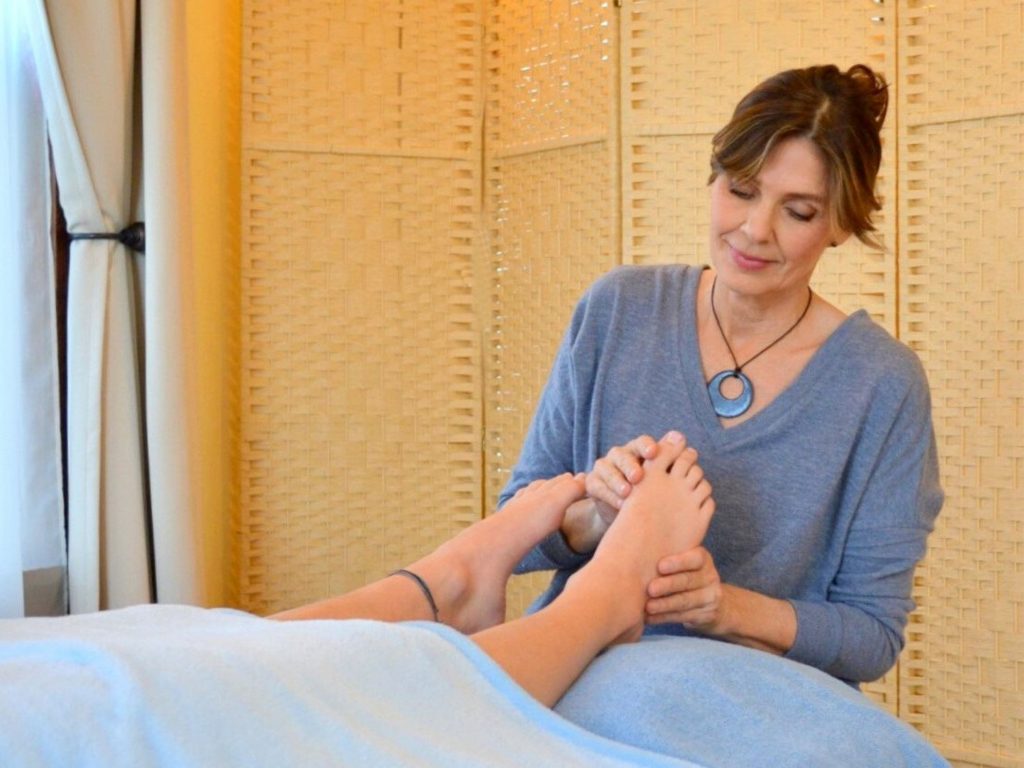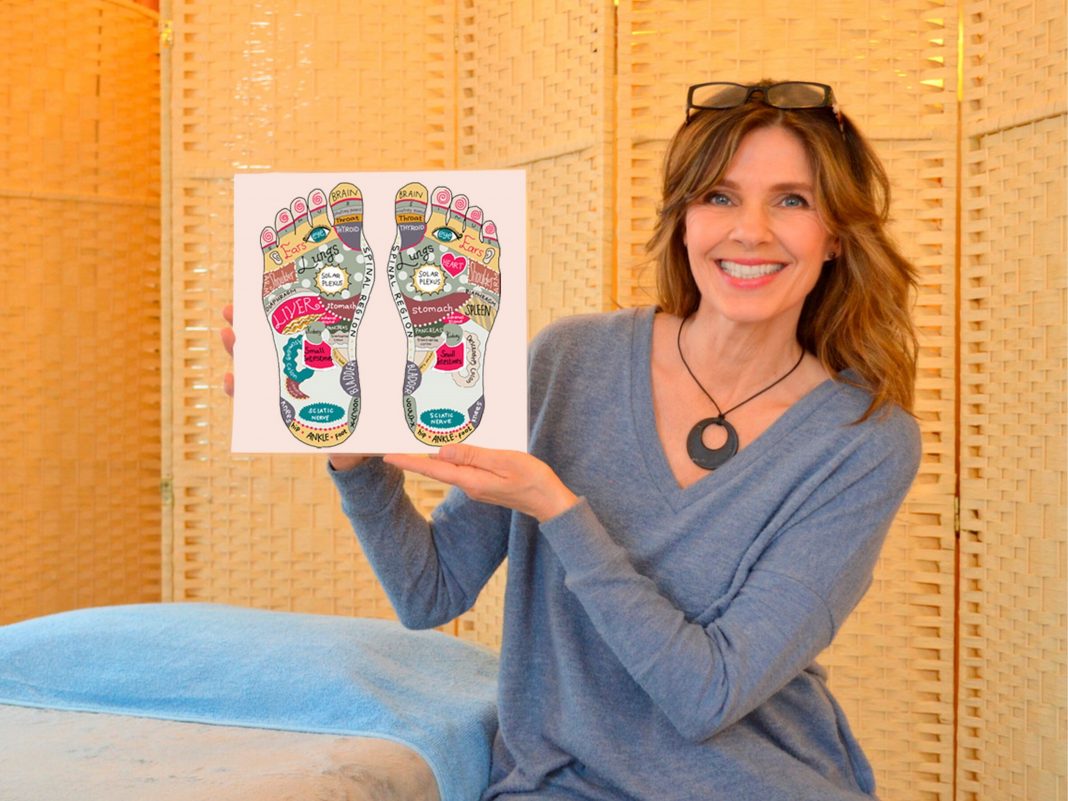When longtime yoga instructor Margot Losa fell in love with the study and practice of reflexology, she had no idea it would lead to an awareness of a darker side of the industry.
Margot starts every appointment by showing her client illustrated maps of ears, hands and feet. The maps look like pages from a coloring book. You may be familiar with these images: outlines of two hands, two feet and two ears are divided into sections, filled with different colors, and labeled to show which parts of the body correspond with each section. Margot takes this educational moment to be sure every client understands that by systematically applying specialized pressure techniques to the ears, hands and feet, she’ll stimulate and relax every organ, gland, muscle and system in their body.
“I was surprised when several of my clients recognized the images of the maps,” Margot says. “They associated the image of the foot map with signs they’d seen in the windows of ‘foot spas.’” She found herself explaining to her clients that what she offers is much different than what the so-called “foot spas” claim to do for a fraction of what she charges. She began to look into those foot spas a little more closely and quickly found that she was not the first reflexologist to do so.
In the early 2000s, the Washington Reflexology Association (WRA) was only about five years old. Twenty founding members and a drove of new members and supporters celebrated a victory in 2002 when Washington State passed legislation allowing reflexologists to be classified differently than massage therapists and therefore be exempt from their licensing requirements. In 2013, the WRA sprang back into political action after a number of “foot spas” resulted in complaints to the Washington State Department of Health.

Concerns about human trafficking were raised when it became apparent that exempting reflexologists from the massage therapy regulations had created a legal environment wherein any person or business could call themselves a reflexologist, see clients behind closed doors and conduct business however they pleased.
These complaints tarnished the sterling reputation of the WRA and upstanding reflexologists across the state. Senators Karen Keiser (D) 33rd Legislative District (King County) and Thurston County’s own Karen Fraser (D) 22nd Legislative District submitted and ultimately guided to passage a bill that would require reflexologists to register with the state.
“Reflexology is so much more than a foot massage,” says Margot. It distresses her to think that the wellness treatment she was so passionate about could be used as a cover up for questionable business practices at best and human trafficking and abuse at its worst. Although “foot spas” are now subject to the same regulations as all other reflexology practitioners, Margot warns that they may still be attempting to operate more covertly.
“Reflexologists must have a license number beginning with RF on all business cards, brochures and signs,” Margot explains. “Always make sure any reflexologist you seek treatment from has this number because it means they’ve been professionally certified.” The best option, she says, is to find a practitioner on the WRA’s Find a Reflexologist list. If you find a reflexologist another way, you can verify a license number through the Washington State Department of Health website.
After 20 years of yoga instruction and practice, Margot is deeply knowledgeable about how the systems of the body connect to keep us well and functioning. Unlike massage, reflexology has the power to stimulate every element and system of the body from within. Nerves that end in our feet, hands and ears can be stimulated using specialized pressure techniques. A 60-minute session triggers toxin release, improved circulation, pain reduction and an increased range of motion, among other benefits. Margot tells stories of clients who have walked into their visit using a cane and walked out without one.

Margot offers reflexology sessions at two locations downtown Yelm. She has a lovely sunny space set aside in Fire Within Yoga & Wellness and a cozy room at The U Wellness Center. She also offers in-home visits by referral. Bookings can be made through her website. You can read client testimonials on her Facebook page.
The most striking thing about Margot is her passion for helping people feel better quickly through the art and science of Reflexology. She is a generous fountain of knowledge when it comes to recommending stimulus points and techniques her clients can use on themselves. She refers to it as “homework,” and empowers her clients to stay on top of problem areas on their own between sessions. She also recommends several books for anyone who might be curious about learning more before scheduling a session. “Reflexology” by Bill Flocco is straightforward and thorough. “The Reflexology Manual” by Pauline Willis focuses on the reflexes in the hands and feet.
The ability to self-treat is part of the appeal of reflexology, but there is no replacement for the hands of a well-trained, licensed reflexologist performing a session of healing through just the ears, hands and feet.




















































